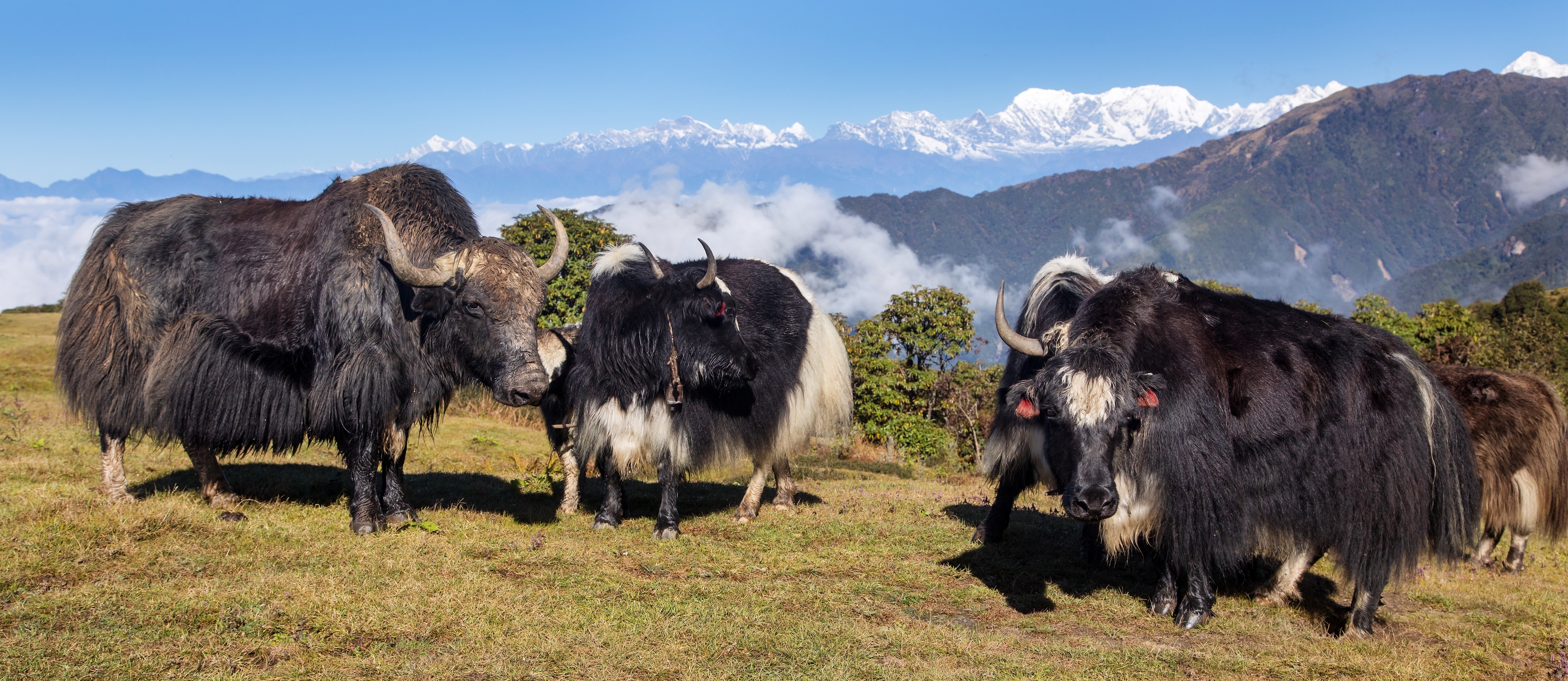Among the breathless heights of the Tibetan Plateau, a fascinating hybrid animal is commonly seen lugging backpacks and showing off its horns. Its name is the dzo, or dzomo; the product of interspecies romping between a yak and a cow.
The yak-cattle hybrids are known as “dzo” if they’re male and “dzomo” if they’re female. The males are infertile, but the females can produce fertile offspring. Dzomo can also be backcrossed, meaning they can reproduce with their parent species. As a result, the gene pool is pretty muddled, although scientists have been able to untangle it to uncover their evolutionary history.
A genetic analysis in 2023 found that yaks were first domesticated in the Tibetan Plateau 7,500 years ago. Furthermore, the researchers found that yak-cattle hybridization occurred in the region around 2,670 to 2,360 years ago.
Like some other hybrids, they combine some of the most desirable traits of both parent species.

Yak and dzo can live happily side by side in herds.
Image credit: Daniel Prudek/Shutterstock.com
Yaks are well adapted to the high-altitude regions of Central Asia, particularly the Himalayan region and the Tibetan Plateau. Along with their long hair and sturdy builds, they’ve evolved genetic traits that help them survive the mountain’s low oxygen levels and intense solar radiation.
The drawback of yaks, as far as humans are concerned, is that they don’t produce much milk. Enter: the domestic cattle, animals that have been selectively bred for high milk and meat production.
When the two animals reproduce, they can produce hybrids that strike a nice balance, producing more milk than yaks while retaining the hardiness needed to thrive in the mountains.
“Hybridization allows cattle to move high, and yak to move low at the same time they produce more milk,” Xinyi Liu, an associate professor of archaeology at Washington University and co-author of the genetic analysis, explained.
The hybridization of yaks is once again stepping in to meet the new global crisis of climate change. In the remote eastern Himalayas, the Brokpa people, a semi-nomadic pastoralist community, are crossbreeding yaks with their hardy hybrids to create new breeds that are better suited to warming temperatures, longer summers, and dwindling pastures.
Source Link: Dzo: Hybrids Beasts That Are Perfectly Crafted For Life On Earth's Highest Mountains